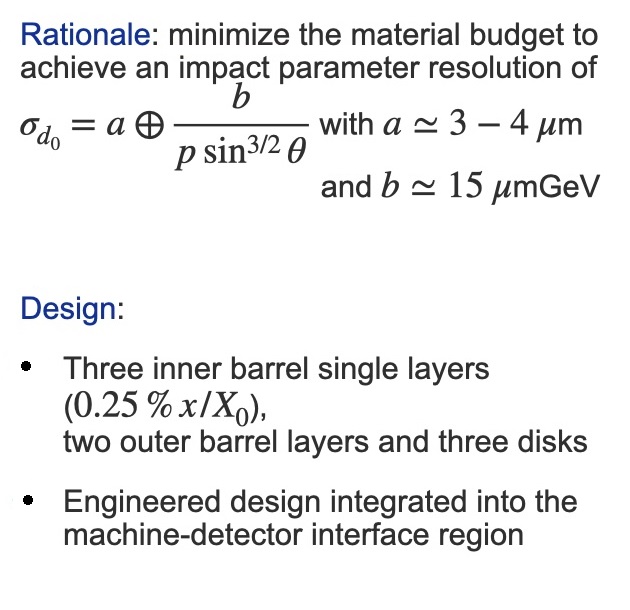
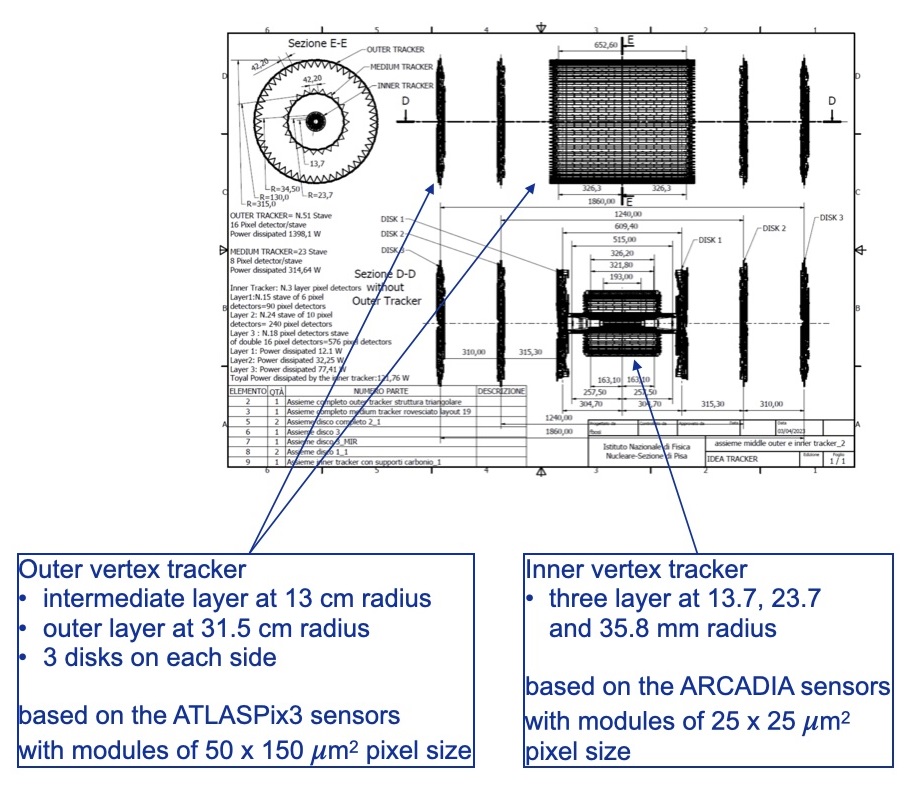
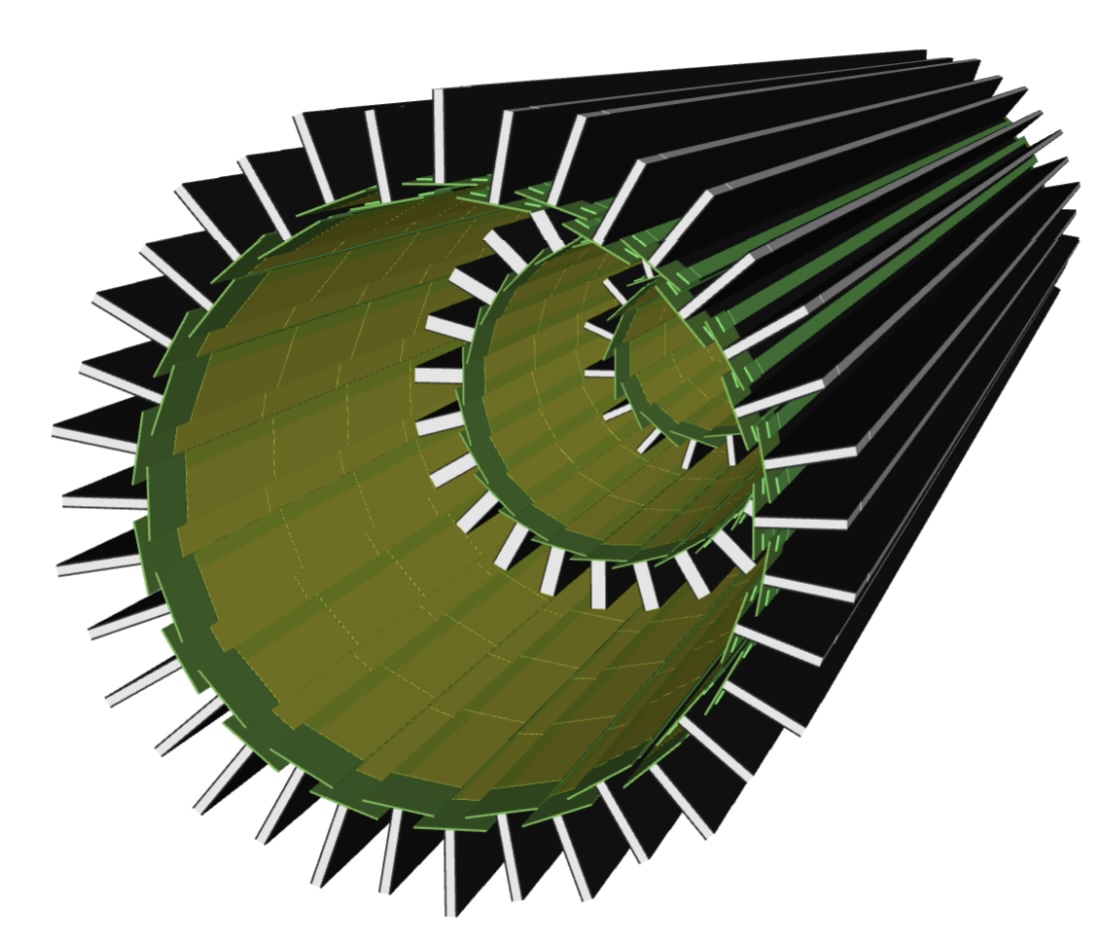
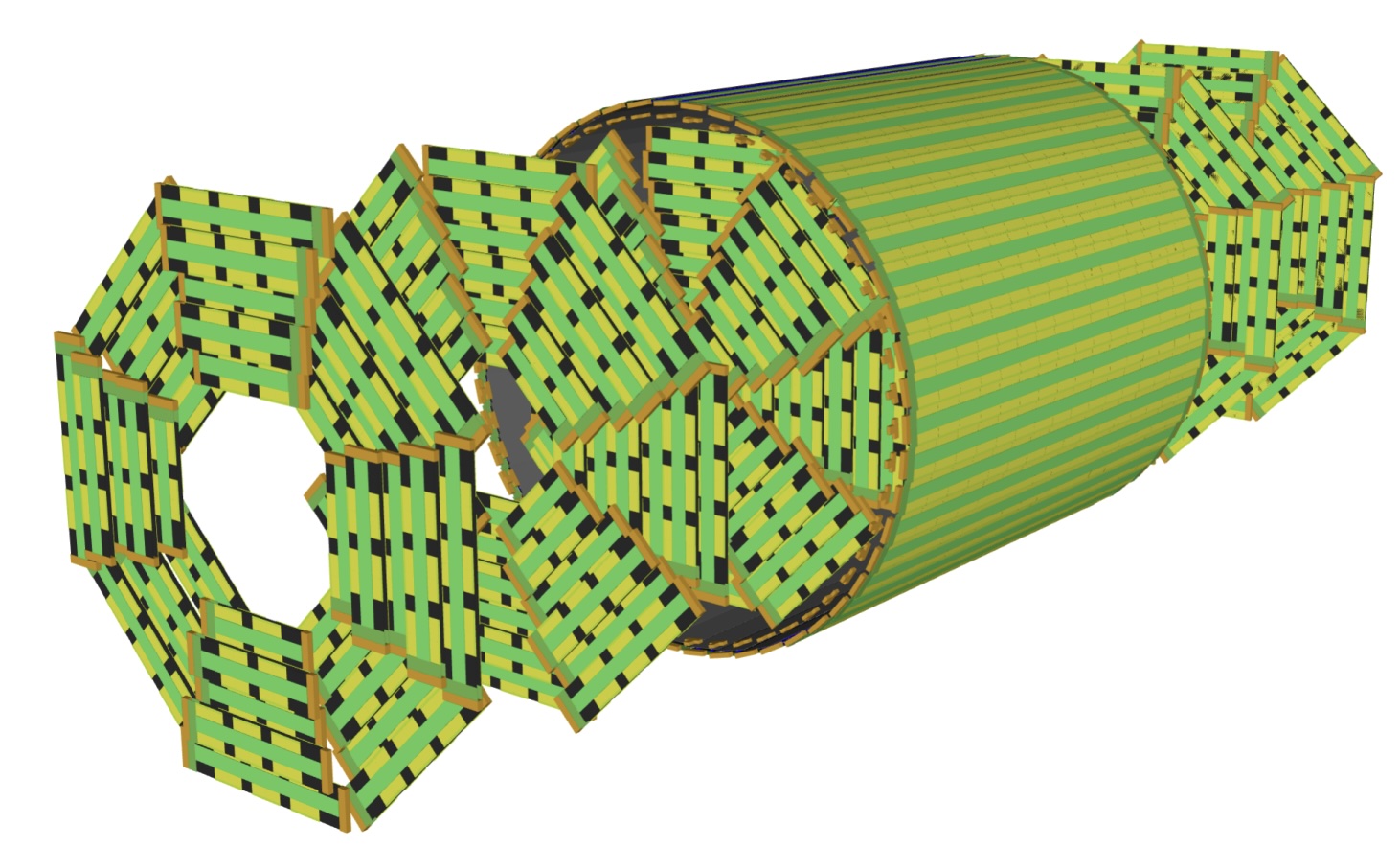
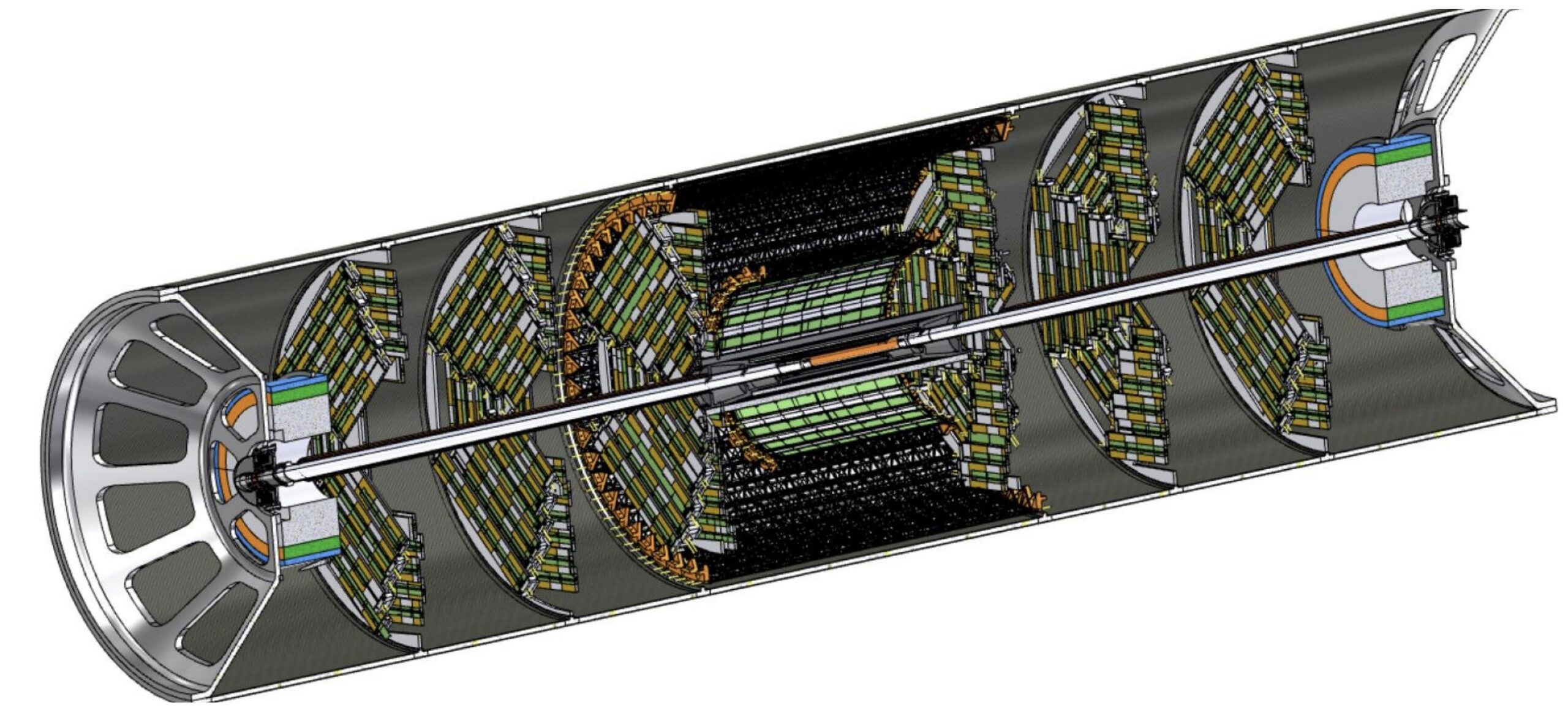
Silicon tracking detectors are an essential tool for the physics studies at future colliders.
The Vertex Detector is situated closest to the collision point, measuring the trajectory of charged particles with micrometric precision to reconstruct the decays of tau leptons and of hadrons containing b and c quarks. This capability allows to study in detail the properties of the electroweak vector bosons and of the Higgs boson through their decays into these particles. At highest energy of FCC top properties will be accessible via the dominant t→bW decay.
The Silicon Tracker, covering the region before the calorimeters, provides precise momentum measurement, used for the reconstruction of the particle flow, and contributes to particle identification. It can be a standalone system or may operate together with a gas chamber: its high accuracy points improve the momentum resolution of the gas chamber and can be used to define the tracking system acceptance which is a relevant systematic uncertainty in some precision electroweak measurements.
INFN Activities
The Vertex Detector and the Silicon Tracker have different requirements, with extremely high point resolution and low material being the driving items for the Vertex Detector and the innermost parts of the Silicon Tracker, and cost and mass production constraining the outer parts of the silicon trackers, covering an area of 50-100 m2 of silicon detectors.
Depleted Monolithic Active Pixel Sensors (DMAPS) are a technology that has developed significantly in the last ten years, also thanks to the INFN projects SEED, HVR_CCPD and ARCADIA, steered by the CSC5-Technological Research. These detectors are built in commercial CMOS processes and have features, like high granularity, low material, simple integration without requiring separate detector and front-end electronics and low production costs, that may satisfy the requirement of both the FCC silicon detectors.
For the Vertex Detectors, the extremely high point resolution requires a very fine pixel pitch, and to keep a light supporting structure and the power consumption should be kept at a level that dissipation in air is sufficient to cool the detectors. Currently there is no design available fully compliant with the strict FCC requirements and new solutions must be developed. Detector prototypes addressing FCC needs are being developed within the ARCADIA and in the framework of AIDAInnova WP5.
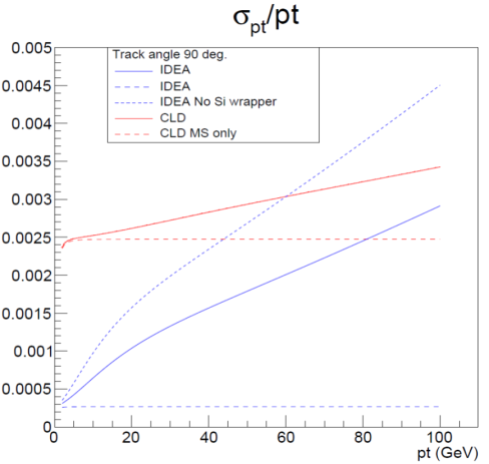
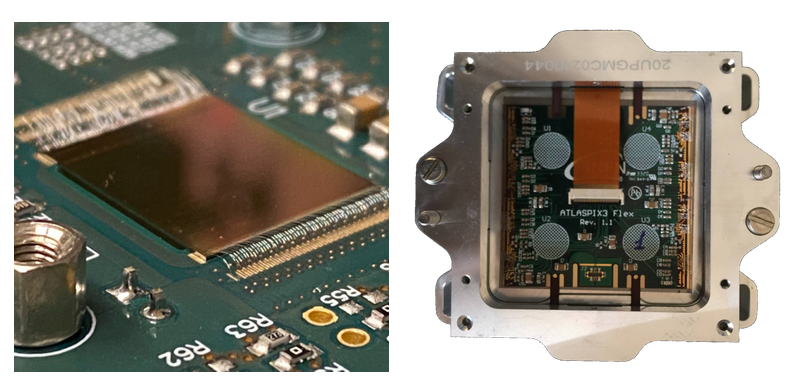
Devices very near to FCC specifications for the Silicon Tracker already exists. As an example, ATLASPix3, a DMAPS developed initially for the HL-LHC upgrades, is a full reticle size (4 cm2) chip, implementing 50 μm × 165 μm pixels on a high resistivity substrate for depletion, with 8-bit pulse height measurement, few ns time stamping, and high-speed triggered readout. INFN groups are developing the integration of these sensors in multi-chips modules and the design of light support structures for the tracker, to demonstrate the possibility to build large area DMAPS systems. The study of light supports is also part of AIDAInnova WP10.

